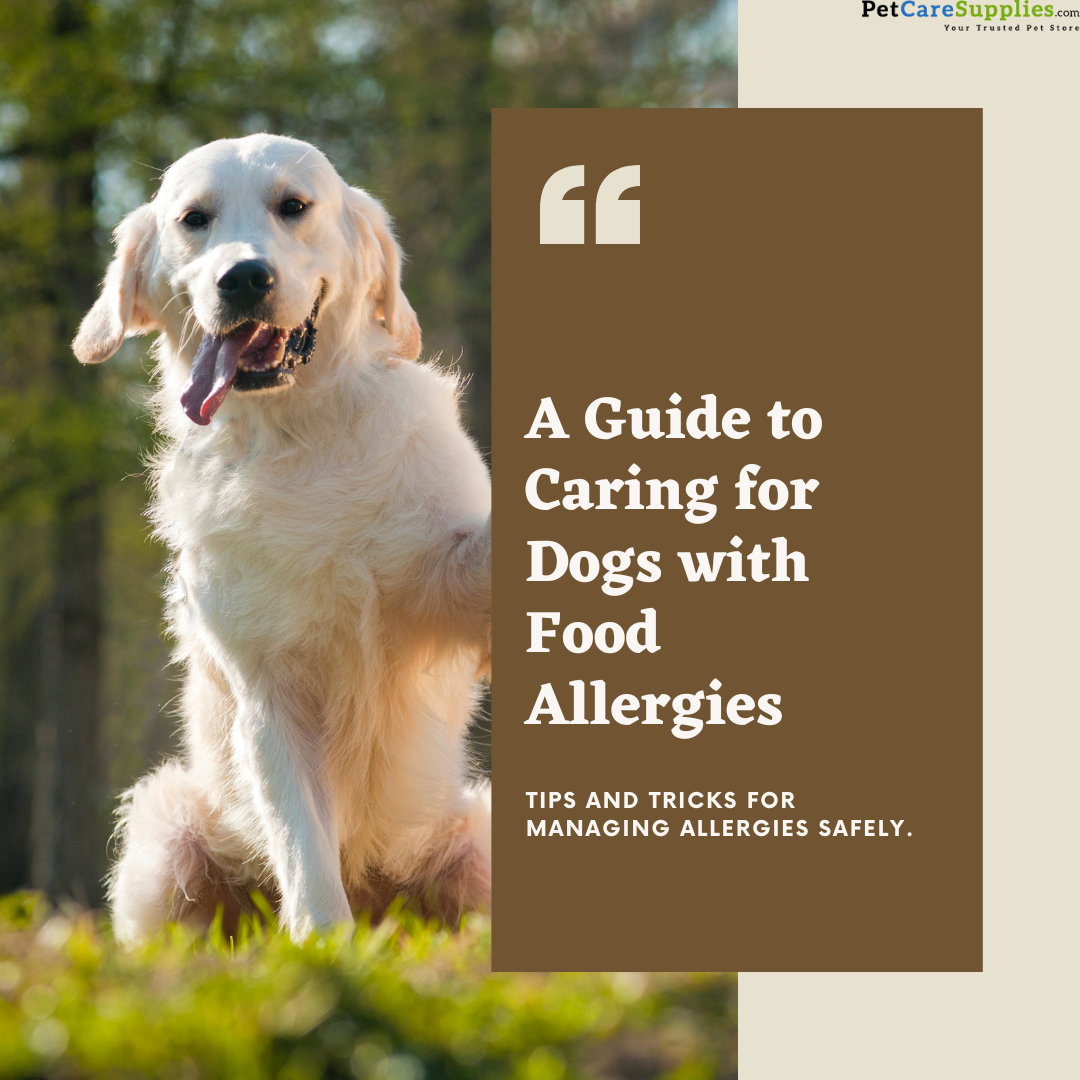A Guide to Caring for Dogs with Food Allergies

Welcoming a furry friend into your home is an incredibly joyful experience. However, along with the cuddles and playtime, it’s essential to be mindful of your pet’s health needs, especially if they have food allergies. Just like humans, dogs can develop allergies to certain foods, causing discomfort and health issues. In this guide, we’ll delve into the world of canine food allergies and provide practical tips for caring for your four-legged companion.
- Understanding Food Allergies in Dogs:
Food allergies in dogs occur when their immune system mistakenly identifies certain ingredients as harmful, triggering a response that leads to allergic symptoms. Common allergens include beef, chicken, dairy, wheat, soy, and corn. Symptoms of food allergies in dogs may vary from digestive issues like vomiting and diarrhea to skin problems such as itching, rashes, and ear infections. Identifying these symptoms early on is crucial for managing your dog’s allergies effectively. - Consulting with Your Veterinarian:
If you suspect that your dog has food allergies, it’s essential to consult with your veterinarian for an accurate diagnosis. Your vet may recommend an elimination diet, where potential allergens are gradually removed from your dog’s diet to pinpoint the culprit. Additionally, they may conduct allergy tests to identify specific allergens and develop a tailored treatment plan for your furry friend. - Switching to Hypoallergenic Diet:
Once your veterinarian has identified the allergens causing distress to your dog, they may suggest switching to a hypoallergenic diet. Hypoallergenic dog food is formulated with limited ingredients, making it easier to avoid common allergens. These diets typically feature novel protein sources like venison, duck, or salmon, along with easily digestible carbohydrates such as sweet potatoes or peas. While transitioning to a new diet, it’s essential to do so gradually to prevent digestive upset. - Reading Labels Carefully:
When selecting dog food for a pet with food allergies, it’s crucial to read labels carefully. Look for products labeled specifically as “hypoallergenic” or “limited ingredient,” as they are designed to minimize the risk of allergic reactions. Avoid ingredients that have triggered allergic symptoms in the past, and be wary of hidden allergens or fillers commonly found in commercial pet foods. - Cooking Homemade Meals:
For pet owners who prefer a more hands-on approach, cooking homemade meals for their allergic dogs can be a viable option. Homemade dog food allows you to have complete control over the ingredients, ensuring that your furry friend receives a balanced and allergen-free diet. Consult with your veterinarian or a canine nutritionist to formulate recipes that meet your dog’s nutritional needs while avoiding allergens. - Introducing Novel Protein Sources:
In some cases, dogs with food allergies may develop sensitivities to their current protein sources over time. Introducing novel protein sources can help diversify your dog’s diet while minimizing the risk of allergic reactions. Consider proteins like venison, rabbit, or duck, which your dog may not have been exposed to before. Remember to introduce new foods gradually and monitor your dog for any adverse reactions. - Managing Environmental Allergens:
In addition to food allergies, dogs can also suffer from allergies to environmental factors such as pollen, dust mites, and mold. While these allergies differ from food allergies, they can cause similar symptoms like itching and skin irritation. To alleviate environmental allergies, ensure that your home is clean and free of allergens, use air purifiers, and bathe your dog regularly with hypoallergenic shampoos. - Providing Relief for Itchy Skin:
Itchy skin is a common symptom of food allergies in dogs, leading to discomfort and irritation. To provide relief for your dog’s itchy skin, consider incorporating supplements like omega-3 fatty acids, which can help improve skin health and reduce inflammation. Additionally, topical treatments such as oatmeal baths or medicated shampoos can soothe irritated skin and alleviate itching.
Conclusion:
Caring for a dog with food allergies requires patience, diligence, and a deep understanding of your pet’s needs. By working closely with your veterinarian, choosing the right diet, and implementing strategies to manage allergic symptoms, you can ensure that your furry friend lives a happy and healthy life free from discomfort. Remember, every dog is unique, so it may take time to find the perfect solution for managing your dog’s allergies. With love and care, you can provide your canine companion with the support they need to thrive.










